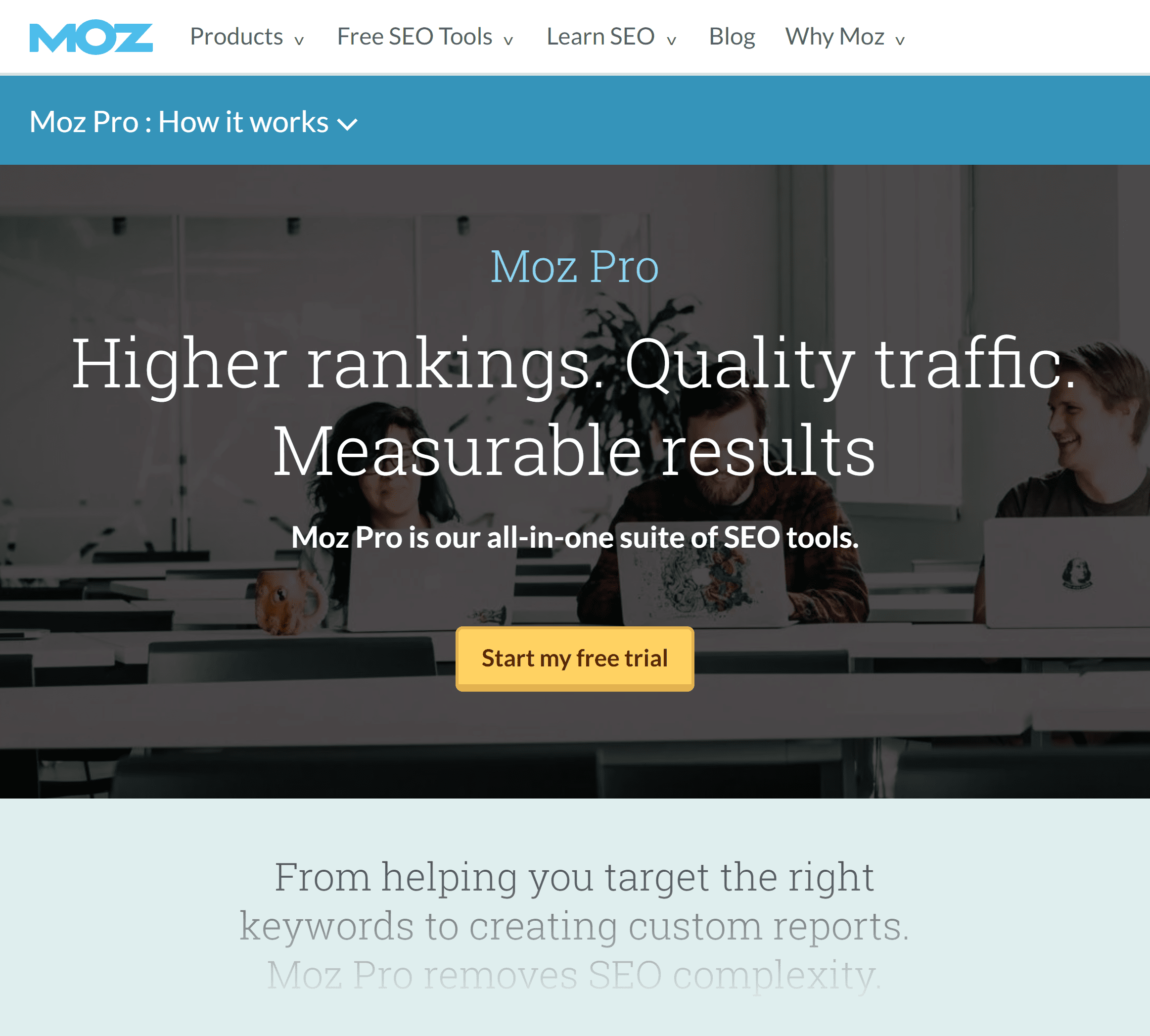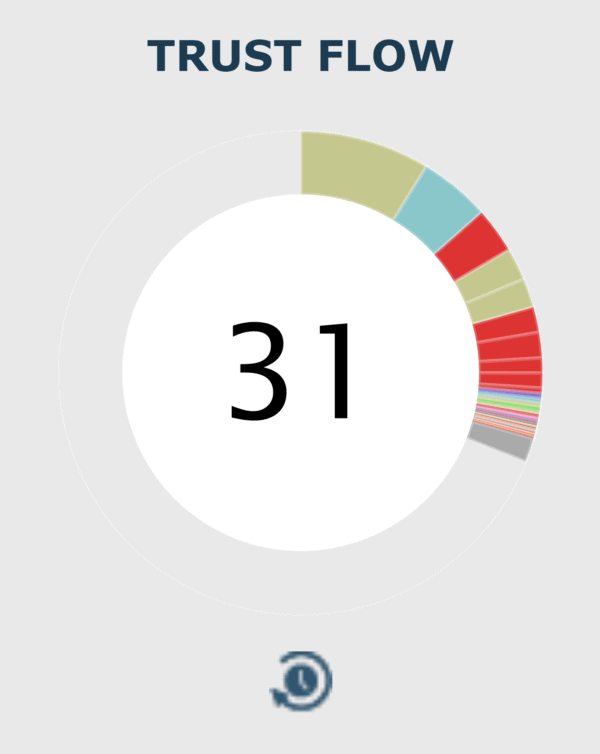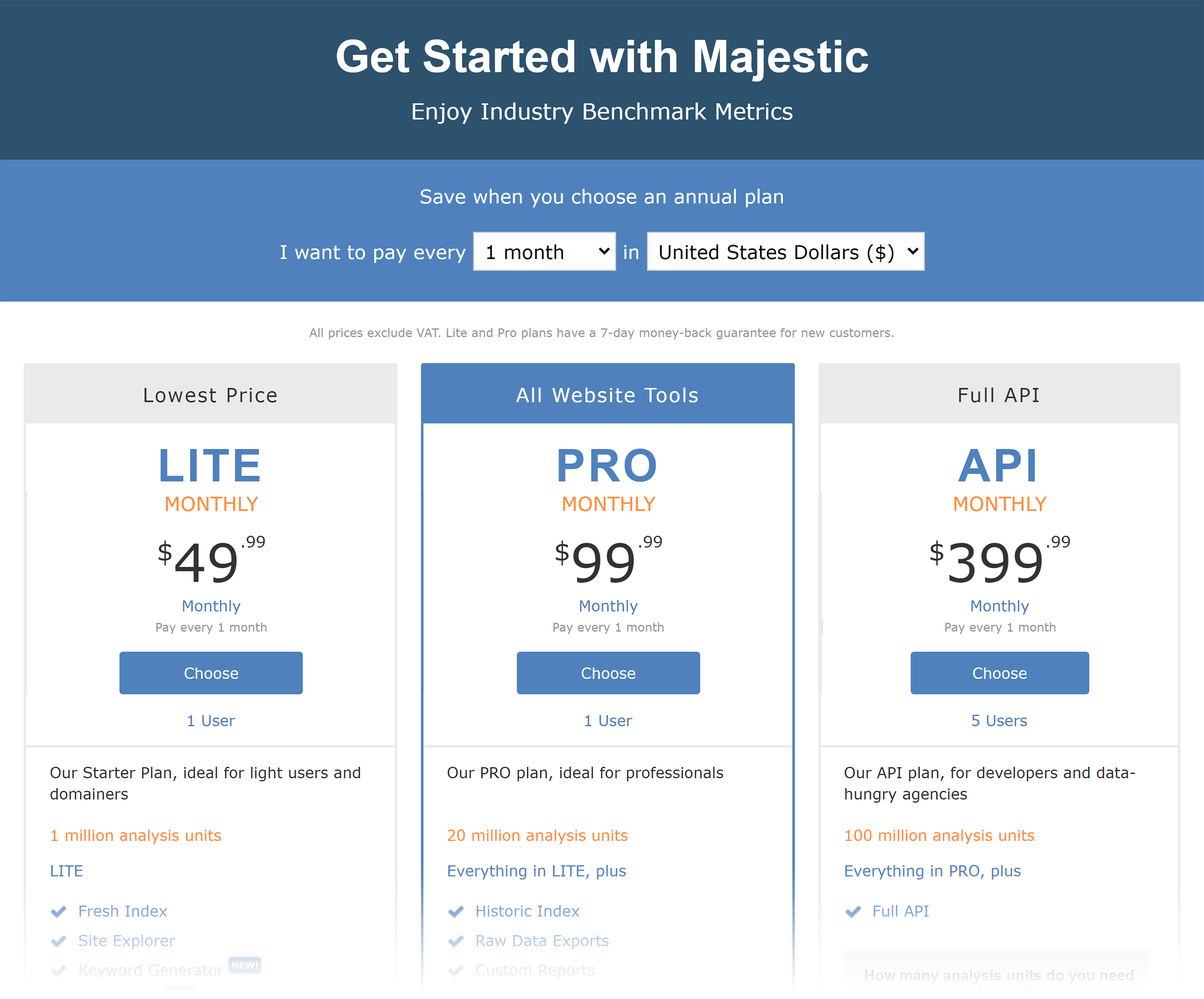What’s The BEST Backlink Checker? [New Data]
Written by Brian Dean

Today I’m going to reveal the best backlink checker on the market right now.
And this is important:
I didn’t just rate the tools based on my personal opinion.
I put each backlink checker to the test.
That way, I could find the best backlink tool on the market right now… based on actual data.
So without further ado, let’s do this!
Introducing The Competitors
Before we dive into the test results, let’s take a quick look at each tool.
Moz Pro
Moz Pro was one of the first tools that let anyone check their site’s backlinks.

The tool (and company) has gone through some ups and downs over the last few years.
But since they decided to refocus on SEO, their software has come a long way.
Is it enough to take the top spot? We’ll see.
For now, let’s check out our next backlink checker tool…
Ahrefs
Ahrefs started as a straight-up backlink tool.

They’ve recently branched with lots of new features, like a keyword research tool.
Did this aggressive expansion distract them from their core offering? We’ll soon find out.
SEMrush
You probably know SEMrush as a keyword research and tracking tool.

But they’ve recently added a backlink tool to its arsenal of features, which helps you monitor your backlink profile.
Majestic SEO

Does that translate into Majestic being the best all-around tool? Let’s find out…
Which Backlink Checker Tool Finds The Most Links?
The first test I did was to check how many backlinks each tool found.
To do this, I ran a full backlink analysis on 4 different websites in completely different industries:
- Backlinko.com: My blog with approximately 172k total backlinks.
- Truvani.com: A new e-commerce site in the supplement space.
- NerdWallet.com: An incredibly popular personal finance website with around 2 million links.
- Canva.com: Image editing software tool with links from 50k+ referring domains.
Note: For this analysis, I focused on total referring domains… NOT the total number of backlinks. Each tool counts a “backlink” a little bit differently. So comparing backlinks between tools is like comparing apples to oranges. Comparing referring domains is more straightforward.
Site #1: Backlinko
Here’s the data each site reported:
| Backlink Checker | Total Links | Total Referring Domains |
|---|---|---|
| Moz Pro | 171.2k | 18k |
| Ahrefs | 172k | 15.1k |
| SEMrush | 612k | 15.6k |
| Majestic | 10.2m | 14.4k |
As you can see, for the analysis of my medium-sized website, Moz found more referring domain links than any tool.
Site #2: Truvani
Here’s the data each site reported:
| Backlink Checker | Total Links | Total Referring Domains |
|---|---|---|
| Moz Pro | 427 | 120 |
| Ahrefs | 554 | 119 |
| SEMrush | 2.2k | 78 |
| Majestic | 1.8k | 104 |
This time, Ahrefs and Moz were essentially tied. SEMrush came in a distant 4th place.
Site #3: NerdWallet
Here’s are the number of links each checker found:
| Backlink Checker | Total Links | Total Referring Domains |
|---|---|---|
| Moz Pro | 2.4m | 53.4k |
| Ahrefs | 2.66m | 36.3k |
| SEMrush | 2.2m | 37.5k |
| Majestic | 2.9m | 28.4k |
Again, Moz won this round.
Site #4: Canva
Here’s what each backlink checker reported for this site:
| Backlink Checker | Total Links | Total Referring Domains |
|---|---|---|
| Moz Pro | 5.5m | 90k |
| Ahrefs | 4.53m | 69.7k |
| SEMrush | 7.7m | 68.2k |
| Majestic | 13.8m | 51.9k |
Moz again won this round. With Ahrefs coming in second.
I also added up the total referring domains that each backlink checker found across the 4 tests (including dofollow and nofollow links). Here are the results:
| Backlink Checker | Total Referring Domains |
|---|---|
| Moz Pro | 161,520 |
| Ahrefs | 121,219 |
| SEMrush | 121,378 |
| Majestic | 94,804 |
When it comes to finding the highest number of inbound links, Moz Pro appears to be the best of the bunch.
How Quickly Does Each Tool Find New Links?
Next, I wanted to see how quickly each tool found newly-created backlinks.
So for this test, I added a link to each of the four test sites from a new page on a partner website.

Then, I checked to see when each platform found the new link.
Here are the results:
| Backlink Checker | Days to Find New Link |
|---|---|
| Moz Pro | 1 day |
| Ahrefs | 4 days |
| SEMrush | 18 days |
| Majestic | 2 days |
Well, it looks like Moz is lightning-fast at finding new links.
Obviously, this was a small-scale test. It’s possible that Moz happened to crawl my page and find the new link before the others.
Either way, at least according to the results of this test, Moz Pro is the winner.
Which Tool is Best for Finding New Link Opportunities?
Next, I decided to see which tool had the best features for not just finding backlinks… but for helping you build new links.
Let’s see what each tool offers in this department.
Moz Pro
“Link Intersect” has to be my favorite Moz Pro feature that’s designed specifically for link building.
To use it, enter your domain…. and up to 5 competing domains.

Then the tool will check the backlinks of all of the sites you put in. And it’ll let you know which websites don’t link to you… but DO link to your competitors.

Why is this feature useful?
Well, let’s say you reverse engineer the backlinks of a single competitor with 100k links. Where do you start? It’s almost impossible to know.
But when you only look at websites that link to multiple competitors, you have a list of sites that are SUPER likely to link to you.
That way, you can focus on the easiest link building opportunities first.
Ahrefs
Like Moz, Ahrefs has a handful of features specifically designed for link building.
For example, one feature I personally use a lot is “Best By Links”.
This report lets you know which pages on a site have the most backlinks.

Why is this helpful?
Because you can see what type of content is already working in your niche.
(In terms of link building.)
For example, a while ago I looked at the “Best By Links” for a popular site in my niche: WordStream.
And I noticed that this single page on their site had 2,060 total links.

So I decided to create something similar to the WordStream page… but better.

Sure enough, my page already has 2.43K backlinks pointing to it:

SEMrush
SEMrush literally has a feature called “Link Building Tool”.

As you might expect, this tool is designed specifically to help you find link opportunities… and use email outreach to get the links you want.
The question is:
Does this feature work?
Well, I just gave it a spin. And I have to admit: it’s pretty darn cool.
Why?
Because it automatically finds the best link-building prospects for your site… and ranks them on a 1-5 scale.

For example, you can see that they recommend that I build a link from this blog post on BrightEdge.com.

They recommend this page because it’s on an authority domain. But it’s also a page that should be easy to get backlinks from.
(I assume they estimate this based on the number of external links on the page. If a page has no external links, no one is going to add your link to that page. On the other hand, someone that runs a resource page with 50+ links is going to be super receptive to your outreach.)
You can even link up an email address with SEMrush and send outreach emails within the platform. Very cool.
Majestic SEO
As you may know, a link from a relevant website carries A LOT more weight than a link from an unrelated domain.

Unfortunately, most link analysis tools focus on site authority… not relevancy.
Enter: Majestic SEO’s “Topical Trust Flow”.
This feature shows you the main topics that a website covers.

That way, you can focus on building backlinks from sites in your industry.
Even though Majestic is outdated overall, I have to admit that Topical Trust Flow is a super unique (and helpful) feature.
Overall, I have to give SEMrush the nod here. Even though their link index isn’t quite as fresh as Moz or Ahrefs, SEMrush’s Link Building Tool is much more feature-rich than anything else on the market.
What Are The “X Factors” That Make Each Tool Unique?
For this test, I decided to see the “X-Factor” that makes each backlink checker unique.
Moz Pro
Some time ago, Moz launched a new, updated version of their popular “Domain Authority” metric.

Unlike the old DA, this new Domain Authority filters out spammy links. This is SUPER helpful for prioritizing link building opportunities.
With the old DA, you’d sort your list of link opportunities by DA… and manually filter out websites that had a spammy link profile. For example, if you noticed a site had lots of exact match anchor text links, you’d throw it out of your list of link prospects.
That’s because Domain Authority tended to get inflated by black hat links (like blog comment spam).
Now that the new DA filters out these low-quality links, you know that a link from a high-DA site will make a dent in your rankings.
Ahrefs
Pretty much every backlink checker has a “Best by Links” feature that shows you pages on a website with the most backlinks.
This feature is SUPER helpful for seeing what type of content works best in your industry. For example, if you look at the most linked-to content on Lifehacker, you can see that a big chunk of them are about productivity.

This information is solid gold. You now know that content about being more productive has worked really well for them. So you can make productivity content a big part of your content strategy.
That’s the good news.
The bad news is that this doesn’t tell you what’s working right now. For example, one of their backlinks is from 6 years ago.

This type of content might still work. But maybe not. It’s impossible to tell how many of their links are from back in the day vs. the last year or so.
That’s where “Best by links’ growth” comes in. It shows you pages that are getting lots of links right now.

Nice.
SEMrush
Most tools evaluate a site’s authority based on one thing: the number of links pointing to that site.
But SEMrush’s SEO metric, “Authority Score” isn’t solely based on links. After all, pointing 50k blog comment links to a site is a surefire way to boost its authority metrics.
Moz’s new DA decided to tackle this problem by ignoring spammy links.
SEMrush takes a different approach. Instead of filtering out spam, they decided to base Authority Score partly based on how much search engine traffic a site gets. They also look at how many keywords that site ranks for in Google:

These traffic-based metrics are SUPER hard to game.
And in many ways, traffic and rankings are a more accurate way to figure out whether or not Google considers a site as authoritative.
After all, if a site ranks for thousands of competitive keywords, Google clearly likes that site. This means getting a link from that website should help your site’s rankings.
Majestic SEO
Majestic’s X Factor is definitely “Trust Flow”.

To be clear: this is different than the “Topical Trust Flow” that we talked about earlier.
Normal “Trust Flow” has nothing to do with topics. Instead, it’s how much the links a site has pointing to it are from highly-trusted domains (like .gov and .edu websites).
All-in-all, Ahrefs wins the “X Factor” battle with its useful “Best by links’ growth” feature.
Which Backlink Checker Offers The Best Value?
You might have noticed that I didn’t include any free backlink checkers on this list. That’s because they’re all terrible.
The truth is: running a link index is insanely expensive.
This is why all the good link analysis tools are paid (and somewhat expensive compared to other SEO tools).
With that, let’s see which paid backlink checker offers up the best value…
Moz Pro
A Moz Pro subscription ranges from $99-$599 per month (with significant discounts if you pay yearly).

Like the other SEO tools I’ve covered in this post, Moz isn’t just a backlink checker. It’s a full SEO software suite with features to help you with keyword research, on-page optimization, and lots more.
But considering we’re focused on links, I’m going to zero in on Moz’s link building and link analysis features.
Overall, Moz’s index is enormous.
This means: when you reverse engineer a competitor’s links, you can be confident you’re seeing most of them.
Moz also has a few helpful features like Link Intersect, to actually help you turn this data into backlinks.
So at $99 per month, I consider Moz a great value.
Ahrefs
Ahrefs’ pricing is similar to Moz Pro.

In my opinion, Ahrefs’s index is more fresh and accurate than any other tool on the market. And the UI is super easy to use (which is HUGE if you spend all day building links as I do).
All in all, you can’t go wrong with a subscription to Ahrefs.
SEMrush
SEMrush’s monthly price ranges from around $120-$450.

SEMrush is definitely designed as a keyword tool FIRST… and a backlink tool second.
This means most of the money you’re paying every month is going towards keyword research features.
Even so, the lowest tier plan (Pro) comes with backlink analysis and link building features. So if the focus of your SEO is content and keywords, but you want to also dabble in link building, SEMrush might be your best bet.
Majestic SEO
Majestic has by far the cheapest paid plans:

(Starting at only $50 per month.)
And considering that Majestic’s tool is 100% focused on links, this is a great value for anyone that’s on the hunt for a cheap link analysis tool.
Overall, when it comes to index size, features, and price, Ahrefs is the best value.
And The Winner Is…
Based on the results of this little test, Moz definitely comes out on top. It’s got a massive index. Plus its ability to find new links is unmatched.
That said:
To crown one tool the “best”, I need to consider lots of factors like:
- Link index size
- Link index freshness
- UI
- Feature quality
- Feature quantity
- Product updates
- Value
The best backlink checker on the market right now is (in my opinion) Ahrefs.
In fact, it’s the tool that I personally use the most. But there’s no doubt that Moz is a close second.
Now I’d Like to Hear From You
Now I’d like to hear what you have to say:
Which tool do you use to check backlinks?
Ahrefs? Moz? Or maybe it’s a tool I didn’t talk about here.
Either way, let me know by leaving a comment below right now.